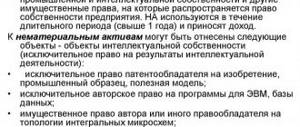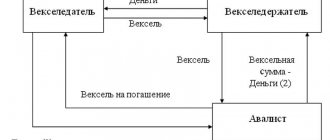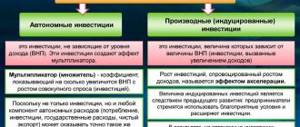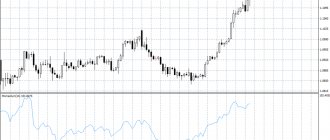olegas Oct 8, 2021 / 80 Views
Let's start right away with the definition. So, a convertible bond is usually called a debt security that, after a certain period (circulation period), can be exchanged for shares. The exchange takes place for a predetermined number of shares (according to the conversion rate). For example, a conversion ratio of 100 means that one bond must be exchanged for 100 shares.
In other words, convertible is a bond that is repaid not in cash, but in shares (usually shares of the company that issued these same bonds).
As a rule, the coupon rate on such bonds is slightly lower. This is explained, first of all, by the potential profit that an investor can receive from them if the shares of the issuing company grow.
What are they and why are they needed?
As the name suggests, a convertible bond gives the right (or obligation) to exchange the security for a predetermined number of shares of the issuing company.
Otherwise, they work like regular non-convertibles, albeit with lower interest rates.
It is profitable for companies to issue such securities because it provides a quick influx of money and reduces the coupon rate on the debt. Investors accept a lower coupon rate in exchange for conversion, which allows them to cash in on the dividends, something they cannot do with a plain bond.
Advantages and disadvantages
Like other exchange-traded assets, they have their pros and cons.
Pros:
- Versatility. Conversion into shares gives investors the opportunity to simultaneously receive coupon income and make money on price fluctuations.
- Reliability. Their owners are more reliably insured against the failure of the issuer. In any case, they will receive payments and repayment of the face value.
Minuses:
- Fragility. While stocks can be held indefinitely, convertible bonds have a finite maturity. Therefore, if the company's revenues increase sharply, it will not be possible to collect the cream for a long time.
- Another disadvantage is the lower level of profitability compared to simple ones. If the stock price remains unchanged or falls, the investor will lose the bonus and receive less interest than on ordinary bonds.
Risks
Convertible bonds are usually (but not always) issued by start-up or small companies. They are much more likely to default than large, established firms.
Another disadvantage of convertible securities is forced conversion. Often the issuer has the right to convert them at any time, which means that all their benefits are lost.
Forced conversion
The issuing company reserves the right to force an early conversion. For holders, this significantly limits potential profits, which is why a preliminary analysis of the situation is so important.
Forced conversion is carried out in two cases:
- a crisis,
- a significant increase in share prices (when the conversion price becomes lower by 30-40%).
In addition, the contract often stipulates other conditions upon the occurrence of which the issuer withdraws its bonds.
Kinds
Despite its relatively recent appearance, this exchange asset is already available in various variations, each of which has its own parameters:
- Simple (straight) or vanilla (vanilla). This is the most common type. Investors are given the right to convert their bonds into shares at a predetermined price and rate at the maturity date.
- Required. They are obligated to convert papers. Bonds usually come with restrictions on the price an investor can receive above the face value.
- Reverse. They give the right to convert into capital at a predetermined price.
- With zero coupon. Unlike the previous ones, they do not provide income on a coupon. The investor benefits from a discount (in other words, purchasing at a discounted price and repayment at par).
- With a warrant. A characteristic feature of such convertible assets is the minimum coupon and the maximum premium on the warrant (the ability to exchange for shares at a price that is more profitable than the market).
There are also bonds with built-in Put and Call options. They are characterized by a long repayment period (on average 15-20 years) and a large discount.
Types and costs of convertible bonds
Exchangeable bonds can be:
- Unconditional - give the investor the right to conversion regardless of the organization’s fulfillment of its obligations to repay the debt.
- Conditionally convertible - provide the possibility of conversion only in the event that the issuer is unable to repurchase its securities.
- With a zero coupon rate - they do not provide for interest payments, but are sold much cheaper.
- With the possibility of exchange - they give the right to exchange them for shares not only of the issuer, but also of other companies.
When the market price of an organization’s shares changes, the value of bonds moves in the same direction: when it grows, it increases, and when it decreases, it falls.
This video will help you learn more about the features of convertible bonds:
Calculation example
Let's say he issues five-year convertible bonds with a par value of 1000 rubles. and a 5% coupon. The “conversion rate” (or number of shares) that the investor receives is 25. Therefore, the effective conversion price is 40 rubles (1000 rubles divided by 25). The investor holds the convertible bond for three years and receives 50 rubles each year from one paper.
If at the moment the shares have risen in price (let’s say, up to 60 rubles), he converts the bond and receives 25 shares at a price of 60 rubles per share, with a total cost of 1,500 rubles.
As you can see, convertibles offer both coupon income and profit on the price difference.
But let’s not forget that if the price of Horns and Hooves shares drops, say, to 25 rubles, the transformation becomes unprofitable, the investor will have to be content with the reduced coupon, and then return his 1000 rubles after redemption.
Main parameters (properties) of a convertible bond
- Par value is the price at which a debt security is purchased and redeemed at the end of the specified time.
- The maturity period is the period during which the bonds are held by the investor. It is upon its completion that the conversion can be carried out.
- Coupon rate is the interest that an organization pays to the holder of a debt instrument.
- Conversion rate is the ratio of one debt bill to the number of shares for which it can be exchanged.
- Conversion price is the cost of acquiring one share as a result of conversion.
- Conversion period is a time period established by the issuer at the end of circulation, during which an exchange can be made.
Examples of convertible bonds in Russia, Europe and the USA
In the domestic stock market, convertible bonds are not as common as in Western countries and the United States. However, in general, Russian legislation contains all the necessary norms, so many are already issuing in them to attract investment.
For example, in December 2013, Yandex issued $600 million in convertible bonds at an interest rate of 1.125%.
The American financial holding JP Morgan did not hesitate to issue $7.3 million.
Until recently, one of the most “tasty” offers on the European stock market were the securities of Deutsche Bank AG. Issued in the amount of $2.7 million at an annual rate of 12.39%. Denomination - 1000 euros, maturity date - June 25, 2021.
Advantages and disadvantages
The use of these bonds carries advantages and risks for both the issuer and the investor.
| For whom | Benefits | Risks |
| Issuer |
|
|
| Investor |
|
|
Experts recommend attracting investments in this way only to steadily growing companies.
Credit rating and diversification
Because these bonds are often issued by young, unreliable companies, investors use special credit ratings and diversification to reduce risk. The top includes analytics from Fitch, Moody's and Standard & Poor's. In Russia, you can use information from agencies accredited by the Central Bank.
Diversification is more difficult. While in the United States thousands of companies issue convertible bonds, in Russia convertible bonds are still issued only once.
Convertible bond calculation example
The amount of assets for which one debt bill, or conversion agreement (CA), can be exchanged is calculated using the formula:
KS = N / Rk
The conversion price (Rk) is determined as follows:
Conversion cost (Sk) can be calculated using the formula:
The amount by which the price of the exchanged bond exceeds a similar indicator of assets is called the KP conversion premium. Calculated as follows:
KP = (Rk / Share price -1) * 100
Watch the video about the procedure for calculating convertible bonds:
Where can I buy
You can purchase individual convertible bonds through your broker. In addition, a number of large stock companies offer thematic mutual funds.
The largest:
- Calamos Convertible A (ticker CCVIX);
- Fidelity Convertible Securities (FCVSX);
- Vanguard Convertible Securities (VCVSX);
- Franklin Convertible Securities (FISCX).
It is possible to choose exchange-traded funds ETF (for example, SPDR Barclays Capital Convertible Bond ETF).
Best brokers
To choose a broker, look at his reputation, as well as the spreads, commissions and special conditions he can offer you.
Verified foreign brokers
| Name | Rating | pros | Minuses |
| Interactive Brokers | 8/10 | They speak Russian | Subscription fee 10$\month |
| CapTrader | 8/10 | No monthly fee | They only speak English |
| Lightspeed | 7/10 | Low minimum deposit | Imposing services |
| TD Ameritrade | 6.5/10 | Low commissions | Not everyone gets an account |
What risks might a bond owner face?
Investing is always a risk. When buying bonds, you will face the following dangers.
- Default risk
— the risk that the issuing company will go bankrupt and will not be able to fulfill its financial obligations to the investor. If you purchased covered bonds, you do not face this risk - you will still get your money back.
- Risk of liability restructuring
— the risk that the terms of the bonds will change: the maturity date, the amount of coupon income, the timing and frequency of payments. Such decisions can be made by the general meeting of bondholders at the request of the issuer itself, if it understands that it cannot fulfill its obligations.
- Liquidity risk
- the risk that you will not be able to quickly sell your bonds at a fair price if you want to do this before maturity. It may happen that there will be few or no people willing to buy your bonds. More often this happens if the issuing company has financial problems or is simply an unknown organization.
- Interest rate risk
— the risk that average market rates on similar bonds will become higher. If your bonds have a fixed interest rate below the market rate, you are a loser - your income will be less than it could be.
For example, you bought three-year bonds with a yield of 10% per annum. A year later, the average market yield on similar bonds increased from 10 to 12%. It turns out that you will earn less than other investors who buy securities on new terms. And if you want to sell your bonds early, you will have to reduce the price below par. Only then will your securities be of interest to another investor.
This risk is closely related to the movement of the key rate of the Bank of Russia, on which other rates in the financial market depend. When the key rate decreases, interest rate risk is not realized. But when it rises, the yield on new bonds usually rises, and the interest rate risk for owners of old securities increases.
- Inflation risk
— the risk that inflation will overtake bond yields. It turns out that you will not increase your real capital, but will lose part of it. After all, tomorrow you will be able to buy less with it than today. But in recent years, inflation has dropped significantly, and the Bank of Russia now intends to keep it at 4%. So this risk is also minimal.
Accounting for bonded loans
Lyubov Romanova
, Expert of the International Reporting Department of AKG Interexpertiza (AGN International).
With the development of the stock market, one of the most popular ways to raise borrowed funds has become the issue of bonds. The variety of types of bonded loans and different rules for their accounting make it difficult for specialists to understand them. Knowing all the nuances of the accounting process will help you avoid difficulties.
Chapter
:IFRS
The procedure for reflecting the placement of a bond issue is regulated by the following standards: IAS 32 “Financial Instruments: Disclosure and Presentation”, IAS 39 “Financial Instruments: Recognition and Measurement” Measurement), and also, starting from 1 January 2007, IFRS 7 Financial Instruments: Disclosures.
Non-convertible bonds
For the issuer, the placement of a bond issue means the emergence of an obligation to pay a fixed amount of money after a certain time. Bonds are initially recognized at fair value less all transaction costs directly attributable to the issue.
Market interest rate
When issuing non-convertible bonds with market yield, their fair value is the amount of cash received. The costs associated with the issue, which are also called transaction costs, may include the costs of preparing the prospectus, registration, services of intermediaries, including the issue organizer, underwriter, etc. In this case, part of the transaction costs may be incurred long before the bonds are issued (for example, payment for property valuation services in the case of mortgage bonds). These costs can be preliminarily accounted for as accounts receivable and charged to the cost of the issue at the time of recognition of the debt on the bond loan.
Subsequent valuation is carried out at amortized cost. The amortized cost of non-convertible bonds issued at a market rate of interest is determined as the cost of the bond at initial recognition minus payments of principal (interest) plus the accumulated amortization of the difference between the original cost and the maturity value of the obligation. Amortization of the difference between the initially recognized amount and the redemption amount is calculated using the effective interest method.
According to IAS 39, the effective interest rate is the rate that exactly discounts expected future cash payments or receipts through the maturity date of the financial instrument or a shorter period to the net carrying amount of the financial liability. Discounting is carried out at a continuously accrued percentage, the same for each period. The effective interest rate (r) is determined by formula 1:
PV = ?T i=0 (CFi /(1 + r)ni / 365),
where PV (present value) is the initial cost of the loan, which is its fair value minus transaction costs,
CFi (cash flows) – payment flows, including coupon payments, par payments and other payments between the parties to the contract, T – number of payments during the bond’s validity period, ni – number of days from the issue date to the i-th payment date. The effective rate can be calculated using the MS Excel financial function “NET”.
Example 1
On March 31, 2006, the organization issued a bond loan in the amount of 1,000 bonds with a nominal value of 1,000,000 rubles. The bonds were sold at par price. The bonds are issued with a market coupon of 10% of the par value, which is paid annually. The maturity of the bonds is three years. The costs of the issue amounted to 50,000 rubles. (underwriter services paid on December 1, 2005). Reflection of transactions in accounting at the time of payment for underwriter services (thousand rubles):
D-Settlements with other debtors and creditors 50,000
Cash 50,000
The initial cost of the bond issue (PV) will be 950,000 rubles. (1000 x 1000 - 50,000).
Reflection of transactions in accounting at the time of bond issue (rub.):
Dt Cash 1,000,000
Set Bond loan 1,000,000
D-t Bond loan 50,000
Settlement Settlements with other debtors and creditors 50,000
Calculation of expected payments during the term of the bonds is presented in table. 1.
Table 1
Expected payments during the term of the bonds
| payment date | Number of days from issue date (ni) | Coupon payment, rub. | Payment of face value, rub. | Total cash outflow (CFi), |
| thousand roubles |
| 31.03.07 | 365 | 100 000 | — — — | 100 000 |
| 31.03.08 | 731 | 100 000 | — — — | 100 000 |
| 31.03.09 | 1096 | 100 000 | 1 000 000 | 1 100 000 |
The effective interest rate is determined using the following equation:
950,000 = 100,000 / (1 + r)365 / 365 + 100,000 / (1 + r)731 / 365 + + 1,100,000 / (1 + r)1096 / 365
Thus, the effective interest rate will be 12.07%.
Example 1
During the term of the bond issue, interest accrues at the effective rate. This ensures that the amount of costs is distributed over the entire circulation period of the bonds, regardless of the actual payments made. Interest can be accrued once a year, half a year or quarter and is calculated using formula 2:
It = AmCostt-1 x (1 + r) (n / 365) – AmCostt-1,
where It (interest) is the accrued interest at the effective rate r for the current period, n is the number of days of the period for which the interest is calculated, AmCostt-1 (amortised cost) is the amortized cost of the bond loan at the beginning of the current period (end of the previous one).
According to IAS 39, it is calculated using formula 3:
AmCosit = PV + ? ti=0 Ii — ? ti=0 CFi
In practice, as a rule, calculations are made only using data on payments and interest for the current period and amortized cost at the beginning of the current period (using formula 4):
AmCostt = AmCostt-1 + It – CFt.
Example 2
Let's take the initial data from example 1.
The amortized cost during the accounting period (year) changes at the moment of payment of the coupon, therefore the interest accrued for the year is calculated in two stages.
1. Calculate interest accrued at the effective rate for the period from April 1 to December 31, 20061: I 03/31/06 to 12/31/06 = 950,000 x (1 + 0.1207) 275 / 365 - 950,000 = 85,188 rubles.
The coupon payment has not yet been made, so CFt = 0.
The amortized cost at 31 December 2006 will be:
AmCost31.12.06 = 950,000 + 85,188 = 1,035,188 rub.
Reflection of interest in accounting (rub.):
D-t Interest expenses 85,188 K-t Bond issue 85,188
Footnote 1: All calculations were made in MS Exel, so when checking them, the results may differ due to rounding (the rate calculated in MS Exel is 12.0731550455093% in the example rounded to 12.07%).
Footnote 1
2. For the first three months of 2007, interest will be accrued in the amount of 29,507 rubles:
I31.12.06 to 31.03.07 = 1,035,166 x (1 + 0.1207) 90 / 365 - 1,035,188 = 29,507 rubles.
Reflection of interest in accounting (rub.):
D-t Interest expenses 29,507 K-t Bond issue 29,507
On March 31, 2007, a coupon payment (CF) in the amount of RUB 100,000 was paid. Reflection of the transaction in accounting (rub.):
D-t Bond loan 100,000 K-t Cash 100,000
The amortized cost at 31 March 2007 will be:
AmCost31.03.07 = 1,035,188 + 29,507 - 100,000 = 964,695 rubles.
3. Interest for the remaining 9 months of 2007 will be:
I31.03.07 to 31.12.07 = 964,695 x (1 + 0.1207)275 / 365 - 964,695 = 86,506 rubles.
Amortized cost at 31 December 2007:
AmCost31.12.07 = 964,695 + 86,506 = 1,051,201 rub.
Accounting for all calculations during the bond circulation period is presented in table. 2.
table 2
Reflection of transactions in accounting
| the name of the operation | Wiring | Amount, thousand rubles 2006 | 2007 | 2008 | 2009 |
| At the time of loan recognition: Reflection of the initial cost of the bond loan (PV) | D-t Cash funds K-t Bond loan D-t Bond loan K-t Settlements with other debtors and creditors | 950 | — | — | — |
| Interest accrual at the effective rate (I) (for the period before coupon payment) | D-t Interest expenses K-t Bond loan | — | 29 507 | 30 301 | 30 485 |
| Interest accrual at the effective rate (I) (for the period after coupon payment) | 85 188 | 86 506 | 88 013 | — |
| Actual Payouts (Coupon Payments and Par) (CF) | D-t Bond loan K-t Cash | — | 100 000 | 100 000 | 1 100 000 |
| At the end of the period: Amortized cost of the bond issue (AmCost) | 1 035 188 | 1 051 201 | 1 069 460 | 0 |
The placement of bonds at a price above or below their par value affects the initial cost of the bond issue and is taken into account in the effective rate. Selling bonds at a discount reduces the amount of the original liability recognized and increases interest expense calculated at the effective rate. Accordingly, the premium to the bond price increases liabilities and reduces expenses.
Separation of long-term and short-term parts of the obligation
According to IAS 1 Presentation of Financial Statements, an entity's liabilities must be presented with a separate long-term and short-term portion.
The short-term part should include that part of the bond obligation that satisfies one of the following conditions:
Russian accounting rules allow organizations to account for borrowed funds, the repayment period of which under a loan or credit agreement exceeds 12 months, as part of long-term debt without being converted into short-term debt (clause 6 of PBU 15/01)1.
Footnote 1
: PBU 15/01 “Accounting for loans and credits and the costs of servicing them,” approved. by order of the Ministry of Finance of Russia dated 02.08.01 No. 60n. – Note. editors.
When determining the short-term portion of a liability, it is necessary to calculate the share of liabilities due to be repaid within 12 months after the reporting date that have already accrued as of the reporting date. It can be defined as the difference between the cash payment in the next year (CF) and the interest at the effective rate that will accrue in the next financial year until the last such payment (I).
In other words, the amount that will actually be paid, less the share that will accrue in the next year, is the current portion of the liability at the reporting date.
Example 3
Let's take the initial data from examples 1 and 2.
As of December 31, 2006, the short-term portion of the bond debt will amount to RUB 70,4937). As of December 31, 2007 – RUB 69,699 1).
Information on debt on bonds as of the reporting date is presented in table. 3.
Table 3
Debt on bonds as of the reporting date, rub.
| Index | Number of days from issue date (ni) | Coupon payment, rub. | Payment of face value, rub. | Total cash outflow (CFi), |
| Total debt on the bond loan | 1 035 188 | 1 051 201 | 1 069 460 | 0 |
| Including short-term debt | 70 493 | 69 699 | 1 069 460 | — |
Non-market interest rate
In practice, cases often arise of issuing a bond issue at a non-market rate of return. When issuing a bond with a yield above the market, higher coupon payments imply, in addition to payment for the funds provided, payment for some other benefits received by the organization from this transaction (for example, additional benefits in other transactions with the bondholder).
To determine the effective interest rate in this case, the market interest rate charged on issues of similar bonds is used. This takes into account the currency, duration of the loan, the volume of funds provided, the time of placement of bonds, the creditworthiness of the issuer and other essential conditions of the issue. The requirements for determining the market rate are detailed in AG 69-79 IAS 39.
The fair value of a bond loan is determined by formula 1, and the difference between the fair value and the amount of funds actually received is imputed income (expense).
Imputed income (expenses) are recognized at a time, and IAS 39 allows them to be recognized both in current income (expenses) and in liabilities (assets) of the organization. The criteria for inclusion in one group or another are not regulated, therefore, when making this decision, one should be guided by the general rules for recognizing income and expenses, assets and liabilities of the organization, as well as the requirements of the standards for the relevant operations. To do this, it is important to understand the economic essence of the income (expense) received. It is determined by the source of funds received, as well as the purpose of the bond issue and the direction of its actual use. According to the author, the following options for accounting for imputed income (expenses) are possible.
If bond yields are below market, imputed income arising at the time of initial recognition can be taken into account:
If bond yields are above market, imputed expenses at initial recognition may be accounted for as follows:
Further, during the bond circulation period, the amount of imputed income (expense) accrued upon initial recognition is amortized at an effective rate, that is, imputed expenses (income) are accrued and attributed to the organization’s current operating results. In the profit and loss statement, they are reflected netted with the amount of actual interest expenses on the corresponding obligation (par. 34-35 IAS 1). If the imputed expenses (income) accrued during the bond's circulation period are significant, they may be additionally disclosed separately in the notes to the financial statements.
Example 4
On March 31, 2006, the organization issued a bond loan of 1,000 bonds with a nominal value of 1,000,000 rubles. with a maturity of three years. The bonds were sold at par price. The bonds were issued at an interest rate above the market rate at the rate of 15% per annum, which are paid annually. The organization has no transaction costs. A similar market bond loan will be the loan from example 1.
Let's calculate the effective interest rates for both bond issues. The calculation is given in table. 4.
Table 4
Calculation of the effective interest rate
| payment date | Number of days from issue date (ni) | Cash flow, rub. 2006 | 2007 | 2008 | 2009 |
| 31.03.06 | — | 1 000 000 | 1 000 000 |
| 31.03.07 | 365 | (150 000) | (100 000) |
| 31.03.08 | 731 | (150 000) | (100 000) |
| 31.03.09 | 1096 | (1 150 000) | (1 100 000) |
| Effective interest rate | 14,99% | 9,99% |
The fair value of a non-market loan is calculated using the market effective rate of r = 9.99%, at which interest will accrue over the entire term of the bond issue:
PV = 150,000 / (1 + 0.0999)(365/365) + 150,000 / (1 + 0.0999)(731/365) + 1,150,000 / (1 + 0.0999)(1096/365) = 1,124,343 rub.
The amount of imputed expenses will be: PV - CF0 = 1,124,343 - 1,000,000 = 124,343 rubles.
The fair value is then amortized through interest at the market effective rate of r = 9.99%.
Calculations and reflection in accounting are given in table. 5.
Table 5
Amortization of the fair value of a bond issue
| Operation | Wiring | Amount, rub. 2006 | 2007 | 2008 | 2009 |
| At the time of loan recognition: Reflection of the initial cost of the loan (PV) | D-t Cash K-t Bond loan | 1 000 000 | — | — | — |
| At the time of loan recognition: Reflection of the initial cost of the loan (PV) | D-t Imputed expenses (Additional capital) K-t Bond loan | 124 343 | — | — | — |
| Interest accrual at the effective rate (I) (for the period before coupon payment) | D-t Interest expenses K-t Bond loan K-t Bond loan | — | 28 698 | 28 049 | 26 687 |
| Interest accrual at the effective rate (I) (for the period after coupon payment) | 83 629 | 80 826 | 77 768 | — |
| Actual payouts (coupon payments, face value) (CF) | D-t Bond loan K-t Cash | — | 150 000 | 150 000 | 1 150 000 |
| At the end of the period: Amortized cost of the bond issue (AmCost) | 1 207 971 | 1 167 496 | 1 123 313 | — |
Thus, accrued interest represents expenses at the actual effective rate of the bond (14.99%), reduced by the amount of imputed income.
If you want to disclose the interest expense components separately, you must also calculate the interest expense accrued at the effective rate of r = 14.99%. The calculation is given in table. 6.
Table 6
Amortization of the actual cost of a bond issue
| Operation | Amount, rub. 2006 | 2007 | 2008 | 2009 |
| Reflection of actual cost | 1 000 000 | — | — | — |
| Interest accrual at the actual effective rate (I) (for the period before coupon payment) | — | 38 916 | 39 351 | 38 921 |
| Interest accrual at the actual effective rate (I) (for the period after coupon payment) | 110 938 | 110 922 | 110 952 | — |
| Actual payouts (coupon payments, face value) (CF) | — | 150 000 | 150 000 | 1 150 000 |
| At the end of the period: Amortized cost of the bond issue (AmCost) | 1 110 938 | 1 110 776 | 1 111 079 | 0 |
The amount of imputed income will, accordingly, be the difference between interest expenses at the actual rate and interest expenses at the effective rate.
Imputed income 2007 = (38,916+110,922) - (28,698+80,826) = 149,838 - 109,525 = 40,313 rubles. Compared to the previous option, only the accrual of interest will change. Reflection of transactions in accounting in 2007 (rub.):
D-t Interest expenses 149,838 K-t Bond issue 149,838
D-t Bond loan 40,313 K-t Imputed income 40,313
Convertible bonds
Convertible bonds are a combined financial instrument that includes two elements:
According to IAS 32, these elements are accounted for separately as components of liabilities and equity, respectively, in contrast to Russian accounting, in which the differences between the accounting treatment of convertible and non-convertible bonds are not normatively defined.
Since capital is the share in the assets of an enterprise that remains after deducting all its liabilities, when dividing a convertible bond into debt and equity parts, its debt part (liability element) is first assessed, and then the difference between the total value of the bond and its debt part is recognized as the equity part ( element of capital).
The debt portion is valued similarly to fair value for a bond with a yield different from the market. It should also be borne in mind that a change in the probability of conversion during the bond's circulation period (for example, caused by a change in the stock price) does not affect the ratio of its equity and debt parts, since regardless of this, the organization remains obligated to make future payments right up to the moment of conversion (or redemption of the bond).
Next, the debt part of the bond is amortized according to the general rule, and upon conversion it is transferred into capital. The equity portion remains unchanged, and at the time of conversion it can be moved from one part of the capital to another.
Example 5
On March 31, 2006, the organization issued a bond loan of 1,000 bonds with a nominal value of 1,000,000 rubles. with a maturity of three years. The bonds were sold at par price. The interest rate is below the market rate and is 6% per annum, payable annually. However, they can be converted into shares of the organization. Conversion is possible on March 31, 2009 in the proportion of 2 shares for 1 bond, with the par value of the share being 200 rubles. The organization had no transaction costs.
Cash flows for this and similar market bond issues are presented in table. 7.
Table 7
Calculation of the effective interest rate
| payment date | Number of days from issue date (ni) | Cash flow, rub. Convertible bond loan | Similar non-convertible bond |
| 31.03.06 | — | 1 000 000 | 1 000 000 |
| 31.03.07 | 365 | (60 000) | (100 000) |
| 31.03.08 | 731 | (60 000) | (100 000) |
| 31.03.09 | 1096 | (1 060 000) | (1 100 000) |
| Effective interest rate | 5,99% | 9,99% |
The debt portion (DP) of a bond loan is calculated using formula 1: DP = 60,000 / (1+0.0999)(365/365) + 60,000 / (1+0.0999)(731/365) + 1,060,000 / (1+0.0999)(1096/365) = 900,526 rubles.
Accordingly, the equity part (EP) will be:
EP = 1,000,000 - 900,526 = 99,474 rubles.
Further, the debt portion of the bond loan will be amortized at a similar market effective rate (9.99%) in the general manner.
As of March 31, 2009, the amortized cost of the loan will be RUB 1,000,000. Let's assume that all bondholders decide to convert them into shares. The conversion price of the share exceeds its par value and amounts to RUB 500,000. (1,000,000 / 2).
Accordingly, in terms of excess over par value, the conversion price should be attributed to share premium:
Accounting entries based on these calculations are reflected in table.
8. Table 8
Reflection of transactions in accounting
| Operation | Wiring | Amount, rub. 2006 | 2007 | 2008 | 2009 |
| At the moment of loan recognition: reflection of the initial cost - separation of equity and debt components | D-t Cash K-t Bond loan | 900 526 | — | — | — |
| At the moment of loan recognition: reflection of the initial cost - separation of equity and debt components | D-t Cash K-t Equity component of convertible bonds | 99 474 | — | — | — |
| Interest accrual at the effective rate (I) (for the period before coupon payment) | D-t Interest on bonds K-t Bond loan | — | 22 986 | 24 018 | 24 599 |
| Interest accrual at the effective rate (I) (for the period after coupon payment) | 66 981 | 69 210 | 71 681 | — |
| Actual payouts (coupon payments) (CF) | D-t Bond loan K-t Cash | — | 60 000 | 60 000 | 60 000 |
| Conversion | D-t Bond loan K-t Authorized capital | — | — | — | 400 000 |
| D-t Bond issue K-t Share premium | — | — | — | 600 000 |
| At the end of the period: Amortized cost AmCost | 967 507 | 999 702 | 1 035 401 | 0 |
Under IAS 32, transaction costs associated with a convertible bond issue are allocated between the debt and equity portions of the bond in proportion to the division of the bond into those components. According to the author, in further accounting, these parts of transaction costs should be taken into account similarly to the equity and debt parts of the loan itself. Thus, the equity portion of the transaction costs will remain in equity (and reduce the equity portion of the bond's value), and the debt portion will be amortized along with the bond's value. Since the initial cost of the debt part is reduced by the amount of transaction costs, for its further amortization it is necessary to recalculate the effective interest rate using Formula 1 (where PV is the debt part minus transaction costs, and CF is the actual cash flows).
Alternative accounting method
In accordance with IAS 39, an organization is given the right to choose an alternative method of accounting for the issued bond issue - at fair value with the difference being recognized in profit or loss. The inclusion of a bond issue in this group is carried out in accordance with the chosen accounting policy of the organization, while IFRS does not contain any special restrictions for the issuer of bonds.
Under this method, bonds are initially recognized and subsequently measured at fair value, with all differences recognized in profit or loss for the current period. Unlike the basic method, transaction costs are not included in the amount initially recognized.
The fair value measurement under this method is based on the quoted price of the financial liability in an active market. However, according to IAS 39, an active market is one where price quotations can be promptly and regularly obtained from an exchange, dealer, broker, industry group, pricing service or regulatory authority, and those prices reflect actual and regular market transactions, carried out by independent market participants. In the absence of such a market, valuation techniques should be used to determine fair value.
Thus, classification into this category is possible when the organization's bonds are quoted on the stock market and are an actively traded security. According to IAS 39, after initial recognition, it is not permitted to change the method of accounting for a financial liability to the primary method of accounting. In practice, this method is used very rarely.
Reflection in financial statements
In the balance sheet of an organization, financial liabilities are reflected as long-term and short-term, depending on the period until the maturity date and the intentions of the organization. Short-term financial liabilities are recognized with a maturity of no more than one year.
The income statement reflects information about all significant types of income and expenses related to financial instruments and transactions with them (according to the categories presented in the balance sheet and notes).
In the cash flow statement, information on cash flows on transactions related to the placement of bond issues is reflected in the corresponding lines of the “Cash flows from financing activities” section.
Information disclosure
IAS 32 and IFRS 7 require the following information to be disclosed in the notes to the financial statements:
If mortgage bonds are issued, the carrying amount of the pledged obligations and the main terms of the pledge must be disclosed.
The organization must also provide information about its risk exposures and how they are managed. Specific risk disclosure requirements vary widely depending on the type of bond, the accounting policies used, market conditions, etc. In particular, all bond issuers must provide information about their exposure to interest rate risk, which includes:
It should also be borne in mind that according to IAS 1 “Presentation of Financial Statements”, if the information obtained as a result of calculations is not significant, its disclosure is not required.
Lyubov Romanova, Expert of the International Reporting Department of AKG Interexpertiza (AGN International)
Story
History of bonds in Russia
The first domestic government loans in Russia were organized in 1809. They brought an annual fixed income of 6%. The Russian government used government bond issues to finance chronic budget deficits. There were different types of bonds: coupon and zero-coupon, registered and bearer.
Short-term (from 3 months to 1 year) bonds with a par value of up to 500 rubles. most often issued by the Ministry of Finance, medium-term (from 4 to 8 years) with a nominal value of 50 rubles. - State Treasury. Long-term bonds were placed for a period of 50-80 years or more. Perpetual bonds (like English consoles) brought continuous income to their owners. For example, in 1917 there were separate issues in circulation that had been issued before the Napoleonic War.
The appearance of the first and subsequent issues of government securities in 1809-1819. contributed to the revival on the St. Petersburg Stock Exchange. In the early 1820s. government loan securities placed abroad also began to appear on the stock exchange. In Russia there were 21 commodity exchanges, and stock transactions were carried out on 7 exchanges: St. Petersburg, Moscow, Warsaw, Kyiv, Odessa, Kharkov, Riga. The leading one was the St. Petersburg Exchange; it was there that transactions with the largest number of securities were carried out, and their rates were accepted by other exchanges as determining ones.
How to reduce all risks to a minimum?
It is worth remembering that minimal risks usually mean minimal returns. This is a market law.
The most reliable can be considered government bonds, for example, federal loan bonds (OFZ), which are issued by the Ministry of Finance. Their profitability is low, although still higher than inflation.
The next most reliable bonds can be considered bonds of the largest companies with a high credit rating, for example, “AAA”, and moderate profitability.
You can take a risk and invest some of your money in more profitable securities with an average rating of “B”. But in this case, be sure to take into account the risks of default, debt restructuring and liquidity.
Before buying bonds, it is important to check how the issuing company is doing. Watch the news and study open financial and accounting reports - this data is available on the websites of the exchange and authorized news agencies. It is advisable to monitor the condition of the issuer even after purchasing securities.
Profitability and risk assessment
Investing your own money in bonds is the most reliable way to save it. It is recommended to use such an investment for those who really want to receive a decent income without losing their own savings.
Before purchasing, you need to study the key features of the shares and bonds of the selected company or government agency, and only then make a transaction. In most cases, the second option is much more profitable from a financial point of view.
If we compare bonds with bank deposits, then securities have several times higher interest rates.
Often, such securities are put into circulation (for sale) at a reduced price, that is, less than the market average. The difference between the purchase price and the face value is the investor's income.
Comparing bonds and stocks, I note that price fluctuations in the first case are small compared to the active dynamics of stock quotes.
Despite the positive aspects, you must always remember. That there are risks in any investment, but bonds are characterized by minimal financial losses.
Danger of default
The most dangerous thing for an investor is the issuer's default . This happens, but not often. In such cases, the seller goes into the mode of eliminating the cause of the loss.
For this purpose, according to this agreement, 10 days are given, so to speak, for rehabilitation actions.
And if the issuer is unable to fill the gaps in the budget and pay the entire cost at the price of the paper, and the investor chose a product that is not encumbered with collateral, then all the bondholder’s funds are lost.
To avoid this, you need to chase super-profitable offers. On average, you can receive income from a bond from a real issuer within 15% of the deposit amount.
Inflation rate
Many investors - bond holders do not pay attention to the inflation rate and are then surprised that they have gone into the red.
It may be that the inflation rate in the year of purchase was 8%, and at the time of return (for example, after 3 years) it became 10%. Accordingly, “income” will be minus 2%.
Please note that the longer the term of the bond, the higher the inflation risk.
Low liquidity
Another risky situation is the lack of liquidity of the security. There are situations when funds are needed in the shortest possible time and then the owner of the securities decides to sell it, but there are no buyers.
Then, according to the market principle, he deliberately reduces the value of the bond document, and therefore will not be able to sell it at the original price. This is where the downside comes from – no liquidity.
Geopolitical risk
It implies a situation where the owner of a bond document decides to sell it in that part of the country where prices for such a product are minimal.
To avoid high costs, he is forced to go to the country where the exchange rate is higher or to always store any types of bonds in foreign currency terms.










